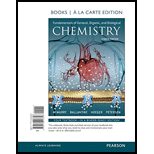
Concept explainers
Interpretation:
It should be explained that what bonds must be made or broken and where the electrons go when the hydrogen –bonded water between the two
ammonium ion and
Concept introduction:
Hydrogen bond is an attractive force established between hydrogen atom attached to a highly electronegative element and another highly electronegative element of the same or different molecule.
Amines are the derivatives of ammonia
In primary and secondary amines, hydrogen bonds can form between the lone pair on the very electronegative nitrogen atom and the slightly positive hydrogen atom on another primary or secondary amine.
In a quaternary ammonium ion a nitrogen atom with four attached groups is positively charged.
And their compounds are known as quaternary ammonium salt.
Want to see the full answer?
Check out a sample textbook solution
Chapter 16 Solutions
Fundamentals of General, Organic, and Biological Chemistry, Books a la Carte Edition (8th Edition)
- The pH of black coffee is 5, and that of milk of magnesia is 10. Is the coffee twice as acidic as milk of magnesia?arrow_forwardGive the Physiological importance of Group III cationsarrow_forwardWrite an ionization of chemical structure to show the ionic dissociation reaction of aspartic acids and Valine.arrow_forward
- The presence of the polar hydroxyl groups makes carbohydratessoluble in water. True or false? Explain?arrow_forwardExplain why two identical atoms joined by a covalent bond cannot form a hydrogen bond.arrow_forwarddraw the atomic structure (include all H, C, O, and N) of the predominant ionization of lysine pHs of 1.0, 4.5, 9.5, and 13 and add the appropriate equilibrium pKa and protons to the equilibrium equations between each pHarrow_forward
 Human Biology (MindTap Course List)BiologyISBN:9781305112100Author:Cecie Starr, Beverly McMillanPublisher:Cengage Learning
Human Biology (MindTap Course List)BiologyISBN:9781305112100Author:Cecie Starr, Beverly McMillanPublisher:Cengage Learning


